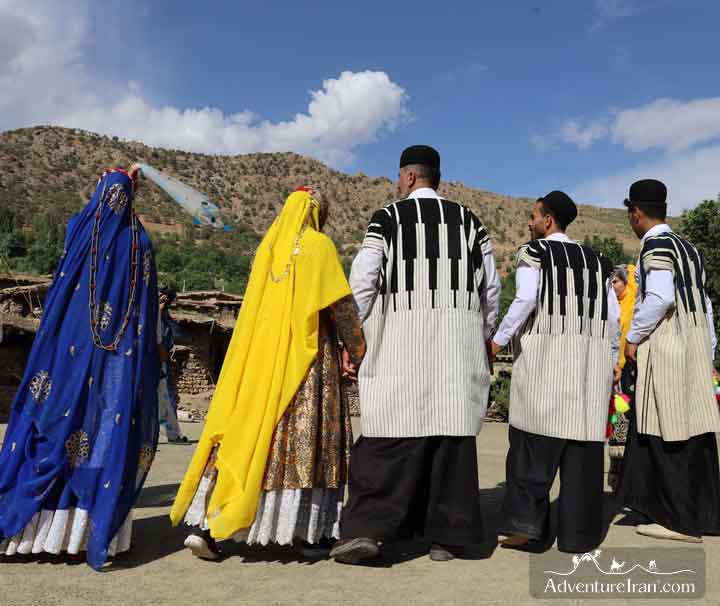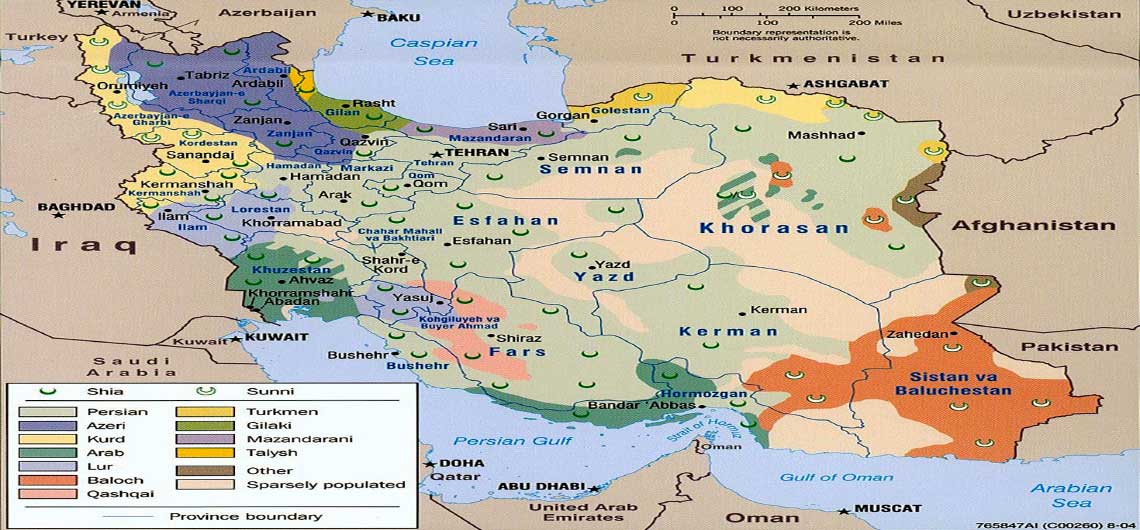
IRAN’S Main Tribal Groups
The Turkmens
The Turkmens are one of the main Turkish speaking tribes. They are presently settled in the north eastern region adjacent to the eastern shores of the Caspian.
They are divided amongst themselves four main sub tribal groups: the Yomut, the Guklan, the Nokhorli and the Tekké. Social and cultural differences can be observed due to their historical background and different means of subsistence, despite their great similarities. The Yomut consist of two sub tribes – The Atabay and Jafarbay.
Until the beginning of this century the tribe was nomadic but now only a few of them migrate and within a limited area. Turkman Sahra is located in the north east of Iran (Golestan Province), south of the Atrak River; sloping gently towards the Caspian Sea. Its climate ranges from a moderate winter to hot and dry summer, which changes into a humid Mediterranean climate around the Caspian Sea.
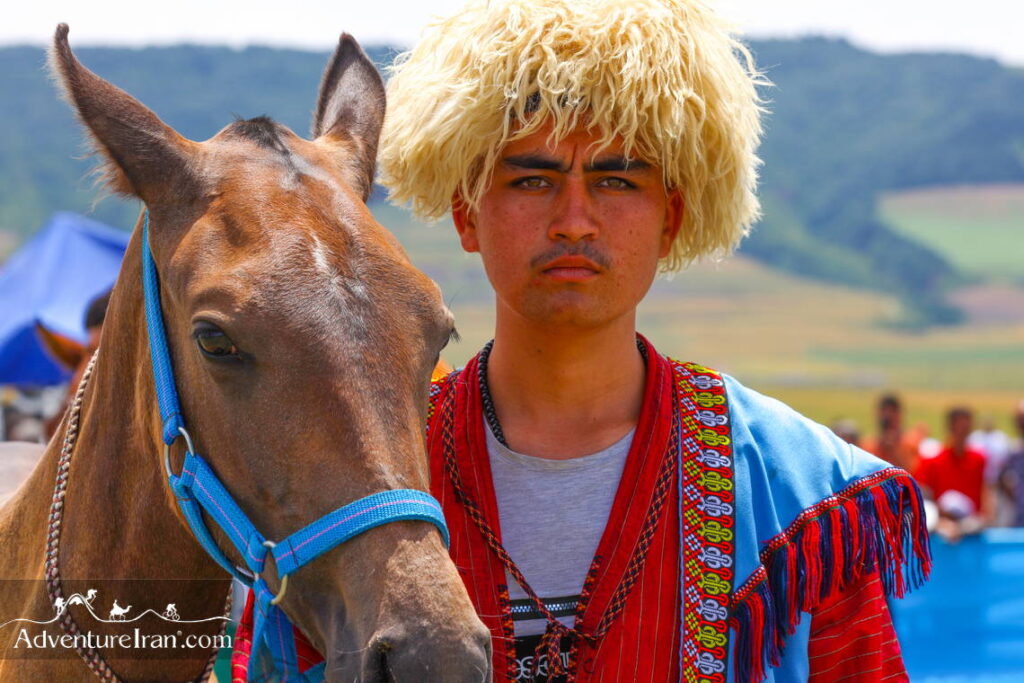
The Shahsavan
Shahsavan means “protectors of the king” and refers to the fact that this nomadic tribe guarded one of Iran’s most vulnerable frontiers, the North West borders of Iran bordering Russia and Russian influenced territory. There are several groups of Shahsavan nomads scattered throughout the region; the majority of whom live near the city of Ardabil and Dashteh-Moghaan. Other smaller northwestern tribes in this area are the Afshaar-e-Qezelbash, Garahgozloo and various clans of the Khamseh tribe. (all Turkish speakers.) They are scattered within the provinces of East and West Azerbaijan, Hamadan, Ardabil and Zanjaan.
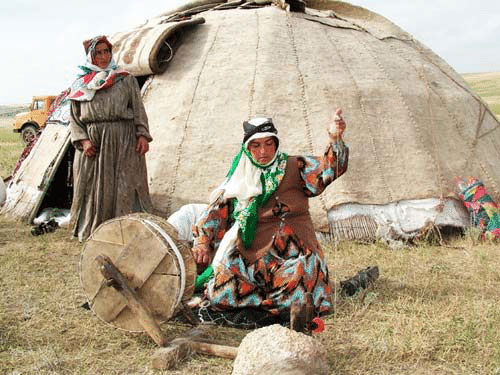
The Lors
The Lors another nomadic tribe of shepherds live in the Zagros Mountains of central and western Iran. Many believe that they were, in fact, the original inhabitants of Persia. They are primarily located in three provinces of Lorestan, Kermanshah and Koh-kiluyeh & Boyer Ahmad, all of which are in the Zagros Mountain range and smaller groups have settled in the provinces of Fars, and Khuzestan. The valleys within this range have rich pastures that have been used by different nomadic tribes for centuries. Most of the Lors live in this general area, although many of them have moved out and scattered all over the country melding into the general urban population. There are nearly five million Lors in the country, and approximately 70,000 in Iraq.
They speak a dialect, called “Lori,” that is very similar to modern Persian. Since they regularly have contacts outside their own communities, they are generally bilingual. From the total Lor population about 300,000 still follow the ancestral nomadic life style, traveling six to eight months a year and living mostly in tents made of black goat-hair. They only live in permanent dwellings for a few months during the winter. From October to April they move to warmer low-lying pastures; then proceed with their annual migration moving their flocks to high mountain pastures. Some of the Lors prefer farming and live in permanent villages all year round, growing mostly wheat and barley.
They are known inside the country for their rich folklore. Their tales glorify the history of each tribal group and describe the adventures of their heroes. They also emphasize such characteristics as loyalty, generosity, and, most importantly, bravery in battle.
The Qashqaie
The Turkish speaking Qashqaie tribe is the most reputed tribe in southern Iran. The Qashqaie territory extends from Aabaadeh and Shah-reza in Isfahan province to the Persian Gulf coast. The tribe comprises numerous clans. The major ones are Kashkooli, Sheesh Blocki, Khalaj, Farsi Madan, Safi Khani, Rahimi, Bayat, and Darreh Shuyee.
One school of thought maintains that the Qashqaies descended from the ancestors of the Turkish Khalaj clan, who lived Pakistan and Sistan region of Eastern Iran, and then migrated to central and southern Iran. Each clan has a chief, and there was a general tribal leader who was appointed in the old days. The Qashqaie tribe has never played a decisive role in the national political developments, but it has occasionally been the source of short-lived up-rises for the government.
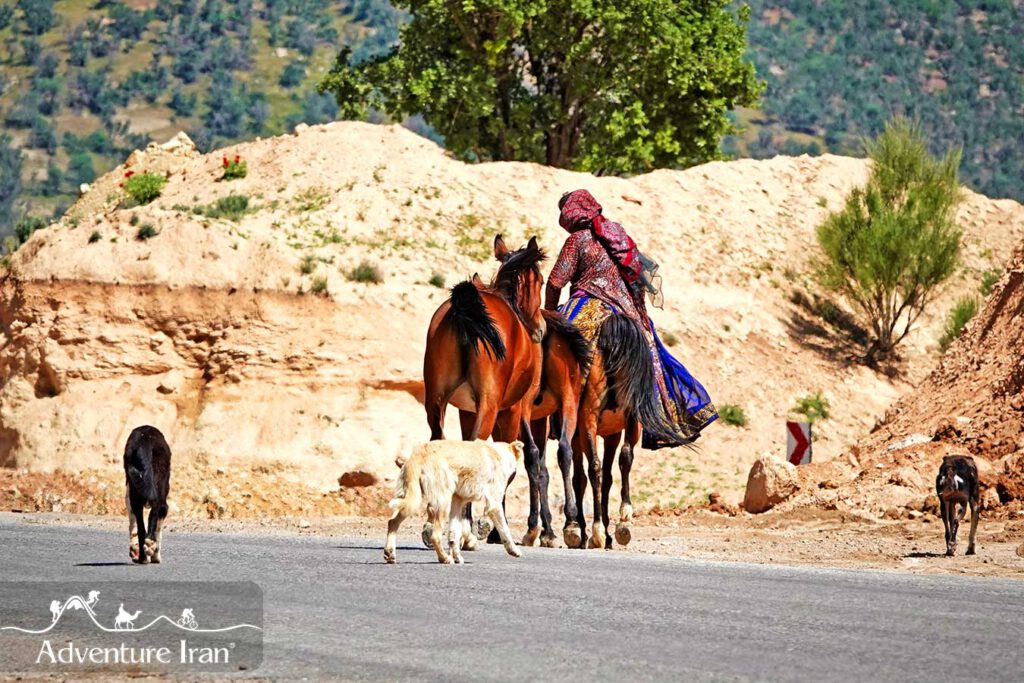
The Bakhtiari
The Bakhtiari consist of clans living in the mountainous regions between Chaarmahaal, Fars, Khuzestan (the Taftoon Field), and Lorestan provinces. It is said that the Arabian and Lor clans have mixed together to form the Bakhtiari tribe. The Bakhtiari tribe is also called the Great Lor. The Bakhtiari tribe, which numbers more than 800,000, inhabits an area of approximately 67,000 sq. km (25,000 sq. mi) that straddles the central Zagros Mountains range. Although only about a third are nomadic, all of the clans embody the Bakhtiari cultural ideals. This region of Chaharmahal and Bakhtiari province is known for having very high quality wool (similar to Merino Wool) that produces excellent carpets.
Other Tribes
The western tribes of Iran, comprising of the Kurds with Kurdish dialect of Kalhor, Sanjabi, Gurkani…. in the provinces of Kermanshah, west Azerbaijan and Kurdestan (also occupying the north of Iraq and south east Turkey.)
The south eastern region of the country is inhabited by the Balooch tribal group who reside in the province of Sistan and Baloochestan. The Balooch are a large group and a considerable portion of Baloochestan is currently in Pakistan.
Central region: The clans of Boyer Ahmad, Doshman Ziyari, Charam, Bavi, Bahmehyi, Tayebi and Mokran reside within the limits of the provinces of Chaharmahal & Bakhtiyari, Khuzestan, Kohkiluyeh and Kerman.
Nomads
Iran, with 96 migrating tribes that differentiate into 547 independent sub groups, that constitute a total of over a million people who participate in annual migration; is considered to be on of the most important countries that still support a pastoralist nomadic way of life.
Some of these tribes have very comprehensive and complex organizations, while other small ones are quite simple; each with its own traditions, life style and belief systems.
The main reason for this variety, is the unique geographical distinction of the country which has led to a vast and exceptional cultural and social heritage.
All tribal societies have three major specifications:
1. All tribes migrate between summer and winter quarters to get to fine pastures for their Sheep and Goat herds.
2. The main occupation in all tribes is animal husbandry.
3. All tribes have social classifications within themselves.

